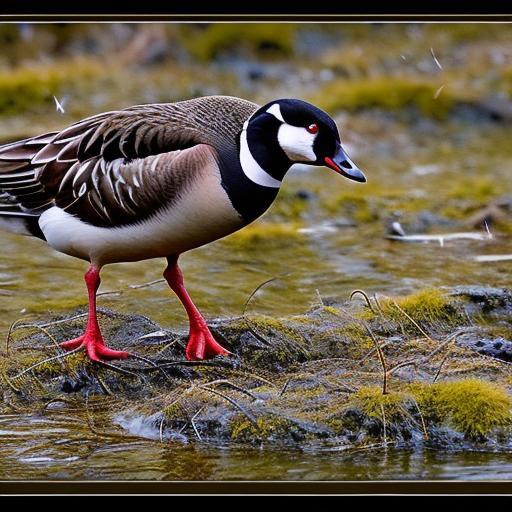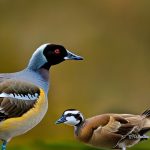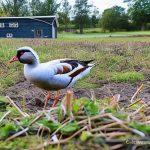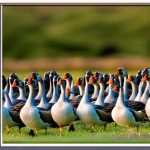Canadian geese are a common sight in Oregon, with their distinctive honking and graceful flight patterns. These birds are native to North America and have adapted well to urban and suburban environments. However, their increasing population has led to conflicts with humans, particularly in areas where they congregate in large numbers. Managing Canadian geese is important to maintain a balance between wildlife and human needs.
Key Takeaways
- Canadian geese are a common sight in Oregon and can cause issues for property owners.
- Understanding the behavior of Canadian geese can help in developing effective deterrents and repellents.
- Physical barriers such as fencing and netting can prevent Canadian geese from accessing certain areas.
- Sound and visual deterrents such as decoys and lasers can be effective in deterring Canadian geese.
- Habitat modification, such as reducing food sources and altering landscaping, can discourage Canadian geese from settling in an area.
Understanding the Behavior of Canadian Geese
Canadian geese are highly social birds that live in large flocks. They are known for their strong family bonds and will often return to the same nesting sites year after year. These birds are herbivores and feed on grasses, grains, and aquatic plants. They are attracted to areas with open water, ample food sources, and suitable nesting sites.
One reason why Canadian geese flock to certain areas is the availability of food. Urban and suburban areas often provide an abundance of grassy lawns and golf courses that serve as feeding grounds for these birds. Additionally, bodies of water such as ponds, lakes, and rivers provide a suitable habitat for them.
Deterrents and Repellents for Canadian Geese
To manage Canadian geese populations and reduce conflicts with humans, various deterrents and repellents can be used. These include visual deterrents such as scarecrows, reflective tape, and predator decoys. Sound deterrents like propane cannons or recorded distress calls can also be effective in deterring geese from certain areas.
Another option is the use of repellents, which can be applied to grassy areas or crops to make them less appealing to geese. These repellents often contain substances that create an unpleasant taste or smell for the birds.
The effectiveness of each type of deterrent or repellent can vary depending on the specific situation. Some geese may become habituated to certain deterrents over time, requiring the use of multiple methods to achieve the desired results. It is important to regularly monitor and adjust the use of deterrents and repellents to ensure their effectiveness.
Physical Barriers to Prevent Canadian Geese
Physical barriers can be an effective way to prevent Canadian geese from accessing certain areas. Examples of physical barriers include fences, netting, and vegetation barriers. Fences can be installed around ponds or other bodies of water to prevent geese from entering. Netting can be used to cover crops or grassy areas, making them inaccessible to the birds. Vegetation barriers, such as tall grasses or shrubs, can create an obstacle that discourages geese from landing or nesting.
While physical barriers can be effective, they also have their drawbacks. Fences and netting can be expensive to install and maintain, and may not be aesthetically pleasing in certain settings. Vegetation barriers require regular maintenance to ensure their effectiveness. Additionally, physical barriers may not be suitable for all situations, such as large bodies of water or public parks where access needs to be maintained.
Sound and Visual Deterrents for Canadian Geese
Sound and visual deterrents can be effective in deterring Canadian geese from certain areas. Examples of sound deterrents include propane cannons, which produce loud noises at regular intervals, and recorded distress calls that mimic the sounds of injured geese. These sounds can create a sense of danger for the birds and discourage them from staying in the area.
Visual deterrents can also be effective in deterring geese. Scarecrows, reflective tape, and predator decoys are commonly used visual deterrents. Scarecrows create a human-like presence that scares away geese, while reflective tape creates a visual disturbance that makes the area less appealing to the birds. Predator decoys, such as plastic owls or coyotes, create the illusion of a potential threat and can deter geese from landing or nesting.
When using sound and visual deterrents, it is important to properly place and maintain them. Deterrents should be moved regularly to prevent geese from becoming habituated to their presence. Additionally, deterrents should be used in conjunction with other management techniques for maximum effectiveness.
Habitat Modification to Discourage Canadian Geese
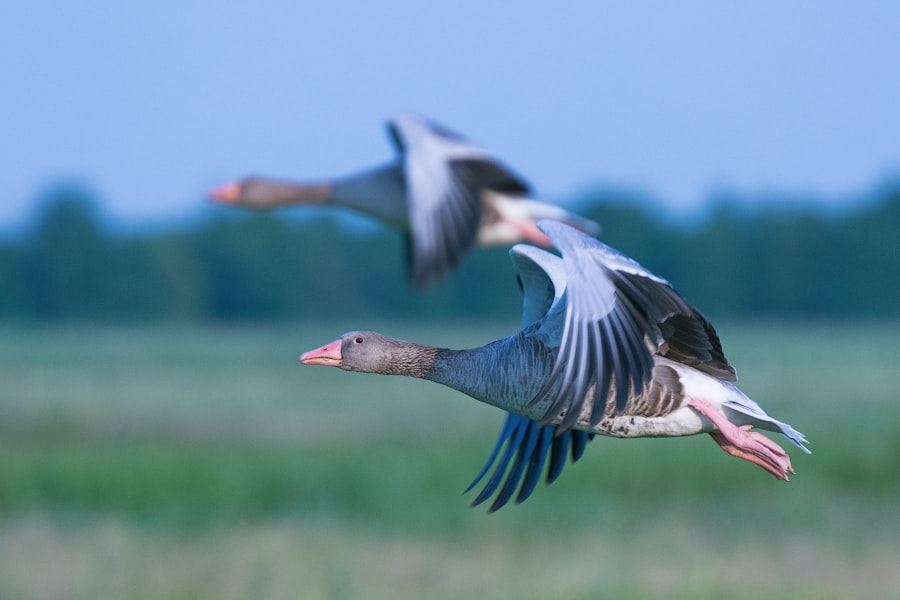
Modifying habitats can be an effective long-term solution for discouraging Canadian geese from certain areas. This can involve altering the landscape to make it less attractive to geese, such as removing or reducing open water sources, planting tall grasses or shrubs, or creating barriers that prevent geese from accessing certain areas.
Removing or reducing open water sources can discourage geese from congregating in an area. This can be done by draining or filling in ponds or lakes, or by installing floating islands that make it difficult for geese to access the water.
Planting tall grasses or shrubs can create a physical barrier that discourages geese from landing or nesting. These plants can also provide alternative food sources for the birds, reducing their reliance on grassy lawns or crops.
Creating barriers, such as fences or netting, can prevent geese from accessing certain areas. These barriers should be properly installed and regularly maintained to ensure their effectiveness.
Professional Services for Canadian Geese Control
In some cases, it may be necessary to hire professional services for Canadian geese control. There are various types of professional services available, including wildlife management companies and pest control companies that specialize in bird control.
When considering hiring a professional, it is important to research and choose a reputable company with experience in managing Canadian geese. The company should have a thorough understanding of local laws and regulations regarding wildlife management, and should use humane methods to deter geese.
Professional services can be particularly useful in situations where other management techniques have been ineffective or when dealing with large populations of geese. They can provide expert advice and assistance in developing a comprehensive management plan.
Legal Considerations for Managing Canadian Geese
When managing Canadian geese, it is important to be aware of and comply with laws and regulations regarding wildlife management. In Oregon, Canadian geese are protected under the Migratory Bird Treaty Act, which prohibits the hunting, capturing, or killing of migratory birds without a permit.
However, there are exceptions to this law that allow for the management of Canadian geese to prevent damage to property or public health and safety. These exceptions may include the use of deterrents, habitat modification, or other non-lethal methods of control.
It is important to consult with local authorities or wildlife management agencies to ensure compliance with legal requirements. These agencies can provide guidance on the appropriate methods and permits needed for managing Canadian geese.
Eco-Friendly Solutions for Canadian Geese Management
There are several eco-friendly solutions available for managing Canadian geese that minimize harm to the birds and the environment. These solutions focus on deterring geese from certain areas without causing physical harm.
One eco-friendly solution is the use of habitat modification techniques, such as planting native vegetation or creating barriers that discourage geese from landing or nesting. These techniques can create a more natural and balanced habitat for both wildlife and humans.
Another eco-friendly solution is the use of sound and visual deterrents that do not cause harm to the birds. For example, recorded distress calls or predator decoys can create a sense of danger for geese without physically harming them.
Using eco-friendly solutions not only helps protect the environment but also promotes a more sustainable approach to wildlife management.
Tips for Long-Term Prevention of Canadian Geese Issues
To prevent Canadian geese issues from recurring in the long term, ongoing management and prevention efforts are essential. Here are some tips for long-term prevention:
1. Regularly monitor and adjust management techniques: Geese can become habituated to certain deterrents over time, so it is important to regularly monitor their effectiveness and make adjustments as needed.
2. Maintain a clean and tidy environment: Geese are attracted to areas with ample food sources, so keeping lawns and other areas free of food waste can help discourage them from congregating.
3. Educate the public: Raise awareness about the importance of managing Canadian geese and provide information on how individuals can contribute to prevention efforts, such as not feeding geese or properly disposing of food waste.
4. Collaborate with local authorities and wildlife management agencies: Work together with local authorities and wildlife management agencies to develop comprehensive management plans and ensure compliance with legal requirements.
Managing Canadian geese in Oregon is important to maintain a balance between wildlife and human needs. Understanding the behavior of these birds and implementing effective deterrents, physical barriers, sound and visual deterrents, habitat modification techniques, and eco-friendly solutions can help reduce conflicts with humans. It is also important to be aware of legal considerations and comply with laws and regulations regarding Canadian geese management. By taking proactive measures and implementing long-term prevention strategies, we can successfully manage Canadian geese issues in Oregon.
If you’re looking for effective methods to keep Canadian geese away from your property in Oregon, you might also be interested in learning about the benefits of keeping chickens. Chickens can serve as natural deterrents to geese due to their territorial nature. They can help keep your property free from unwanted pests and provide fresh eggs as an added bonus. Check out this informative article on poultrywizard.com that discusses the advantages of keeping chickens and how they can help protect your property: https://poultrywizard.com/keeping-chickens/chicken-coop-chester-sc/.
FAQs
What are Canadian geese?
Canadian geese are a species of waterfowl that are native to North America. They are known for their distinctive black heads and necks, white cheeks, and brown bodies.
Why do Canadian geese become a problem?
Canadian geese can become a problem when they begin to congregate in large numbers on private property. They can cause damage to lawns, gardens, and crops, and their droppings can create unsanitary conditions.
What are some methods to keep Canadian geese away from property?
Some methods to keep Canadian geese away from property include using visual deterrents such as scarecrows or reflective tape, using noise deterrents such as loud noises or predator calls, and using physical barriers such as fencing or netting.
Are there any legal restrictions on how to deal with Canadian geese?
Yes, there are legal restrictions on how to deal with Canadian geese. Canadian geese are protected under the Migratory Bird Treaty Act, which means that it is illegal to harm or kill them without a permit.
What should I do if I have a problem with Canadian geese on my property?
If you have a problem with Canadian geese on your property, you should contact a wildlife control professional or your local animal control agency. They can provide advice on how to deal with the problem in a legal and humane way.
Meet Walter, the feathered-friend fanatic of Florida! Nestled in the sunshine state, Walter struts through life with his feathered companions, clucking his way to happiness. With a coop that’s fancier than a five-star hotel, he’s the Don Juan of the chicken world. When he’s not teaching his hens to do the cha-cha, you’ll find him in a heated debate with his prized rooster, Sir Clucks-a-Lot. Walter’s poultry passion is no yolk; he’s the sunny-side-up guy you never knew you needed in your flock of friends!

